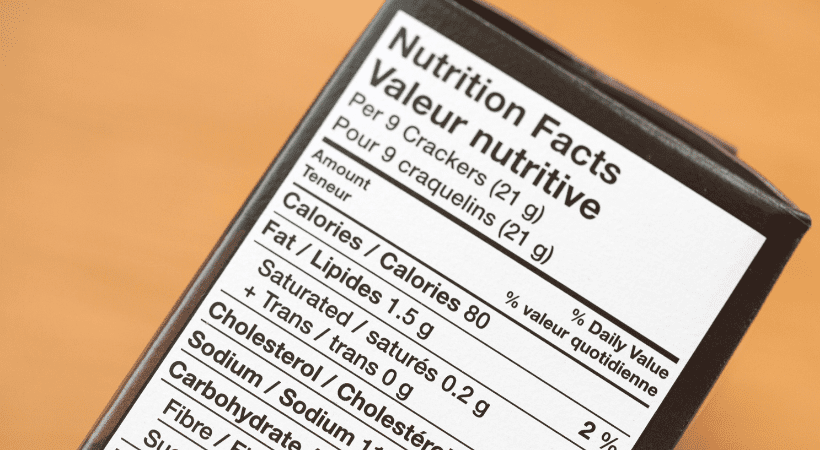Food Labelling Regulations UK: A Complete Guide
Food Labelling Regulations UK: A Complete Guide
Food labelling serves a crucial role in safeguarding the health of consumers by providing important information about the products they buy. To enable brands to protect consumers, there are strict food regulations in the UK that govern what and how this information is presented on a label to ensure clarity, accuracy and honesty.
While the intricacies of these regulations can be daunting, especially for those new to the food industry, this guide aims to assist you in navigating the basics of the complex landscape of food labelling rules in the UK.
Table of Contents
- What are food labelling regulations?
- Why do food labelling regulations exist?
- What information has to be on a food label?
- Other specific labelling requirements that must be followed
- What impact has Brexit had on food labelling regulations?
- How can you ensure that you are following the regulations?
- Important food labelling regulations that may be overlooked
- Further support with food labelling regulations
What are food labelling regulations?
Food labelling regulations establish the rules for what information must be included on food products, and how it should be presented/accessed, ensuring that consumers can easily find out about the food they are buying and consuming. In short, it means they can make the choice that is right for them.
In the UK, the ‘Food Information for Consumers’, which is retained from the EU post BREXIT, serves as the primary legislation governing food labelling. It covers areas such as allergen labelling, nutritional information and ingredient listing.
The Food Standards Agency (FSA) is accountable for the development and implementation of the legislation. As an independent government department, it works to protect public health and consumers’ wider interests in relation to food sold in England, Wales and Northern Ireland. It also works closely with local authorities, businesses, and industry bodies to make sure consumers are protected from harm.
The legislation itself is enforced by Trading Standards and Environmental Health teams in local authorities, who undertake regular inspections of food businesses and testing of foods to ensure compliance, and can take action against those who fail to meet the required standards.
Why do food labelling regulations exist?
To protect consumers from harm
Food labelling ensures that consumers can use the information to make the right choice for them and their health. For example, a use-by date informs the consumer by when they should consume it. Allergen labelling enables those with allergies to decide to consume the product or not.
Learn More: Allergen Labelling: A Guide For Food Businesses
To help consumers to assess value and make informed decisions
Standardising the information required on a food label allows the consumer to make an informed decision by comparison of one product to another. For instance, the consumer might want to compare the pork content in two brands of sausages against the price, so they can decide as to which one is good value.
To ensure product traceability
An identification of the manufacturer or distributor of the product is essential. This not only helps to trace the food product back to its origin, which is crucial in case of any food safety or quality issues, but it also helps to prevent food fraud and mislabelling.
To level the playing field
It’s important that all food producers and manufacturers adhere to the same standards in terms of labelling their products. This helps to create a fair market for all players, ensuring an equal footing for small and big businesses alike.
What information has to be on a food label?
Key information which has to be shown on a food label by law includes:
- The name of the food
- List of ingredients and the quantity of key ingredients
- Allergens
- Net quality of the food
- Durability date (use by or best before dates)
- Storage and instructions for use
- Name and address of the food business operator
- Nutritional information
The above information must be displayed according to specific requirements, including the use of certain size fonts, layout, and language. This helps to ensure that information is presented in a clear and consistent manner, making it easy for consumers to understand.
Learn More: What Information Has to be on a Food Label by Law?
Other specific labelling requirements that must be followed
Origin of the food
Some products are required to display country of origin labelling (COOL). This information is necessary to ensure that the consumer is not misled about the origin of the food, and in some cases, this shows aspects of traceability of foods, such as beef labelling. See the UK Government’s official guidance to Country of Origin Labelling for more information.
Alcohol Labels
Alcohol labels require the amount of Alcohol By Volume (ABV) to be shown. Read our Alcohol Labelling Requirements guide to learn more about this.
Food Supplements & Nutrition
Food supplements and other foods for specialist nutritional purposes have additional requirements. Read our Nutrition Labelling guide to learn more.
Nutrition & Health Claims
Food labels may make nutrition and health claims, but these must meet specific criteria to avoid misleading consumers. Watch out for brand names as these could be considered claims. The UK Government’s official guidance on Nutrition and Health Claims on Foods provides more information.
Compositional Requirements
There are also compositional requirements for some foods, such as chocolate, jam, coffee, water and fruit juices. Check out the government labelling and composition guidance for more information.
What impact has Brexit had on food labelling regulations?
The UK had implemented EU Regulations before Brexit. However, after leaving the EU, some things have had to change.
Food labelling regulations is one such example, particularly in the areas health/Identification marks and organic certification, along with import and export requirements. The recent legislation in Northern Ireland aims to address concerns related to the Northern Ireland Protocol and comply with both the UK and the EU. These changes aim to ensure that UK regulations remain up to date and effective, while also enabling the UK to establish its own standards outside of the EU.
Over time, we expect differences between UK and EU food information regulations to increase, this is called divergence and become a real challenge for businesses selling in both markets.
How can you ensure that you are following the regulations?
The Food Standards Agency has a range of resources and tools to help businesses comply with food labelling regulations in the UK.
Here are some steps it suggests to ensure that you are doing everything correctly:
- Check the requirements for your product: Different products have different labelling requirements, and it is important to understand what is required for your products. The UK government website provides detailed guidance on labelling requirements for different types of food products.
- Include mandatory information: Certain information is mandatory on all food labels, such as the name of the food, the net quantity, the list of ingredients, the presence of allergens, the best before or use-by date, and the name and address of the food business operator.
- Use clear and legible text: All information on the label must be clearly and legibly presented, in a way that is easy to understand for consumers. The government have issued key guidelines which include instructions such as minimal font size and the need to access information without opening the packaging.
- Avoid prohibited claims: There are certain details that are prohibited on food labels, such as claims that a product can cure or prevent a disease or anything that is not supported by scientific evidence.
- Comply with specific regulations: These apply to certain types of food products, such as organic food, alcohol, or meat and poultry products.
- Keep up to date with changes: Everything is subject to change, so it is important to keep up to date. The UK government website provides information on any changes.
As the saying goes, you are what you eat. That’s why food labelling regulations are essential for ensuring consumer safety and enabling informed decision-making. These regulations exist to protect us and ensure that all food products meet the same rigorous standards.
Important food labelling regulations that may be overlooked
Food labelling regulations are just one aspect of food compliance. Your product must also comply with regulations that control the ingredients and packaging of food, these include:
- Food additives, flavourings, enzymes
- Food contact materials
- GMO
You will also want to consider the regulations that cover safety and hygiene, for which you can seek advice from your local environmental health officer or department.
Compliance is not only essential for consumer safety but also for building long-term trust and loyalty with your customers. By helping consumers make safe and healthy food choices, brands and suppliers can demonstrate their commitment to the wellbeing of their customers.
Ultimately, food is not just fuel for our bodies – it’s an important part of our culture and way of life. With proper labelling, customers can make informed choices that align with their values, and food businesses can thrive while prioritising consumer safety and satisfaction.
Further Support With Food Labelling Compliance
If you need further support related to your specific product or product range, our team of consultants have extensive knowledge in the area of food labelling compliance both in the UK and overseas. We can work with you to help you launch your products compliantly. Get in touch with Ashbury to find out more.
Next reads
The Peanut Diaries: School and Social Occasions
The Peanut Diaries: Navigating Social Events and Celebrations with Food Allergies
The Peanut Diaries: A Parent’s Journey to Uncovering their Child’s Allergy
Redefining Healthy: What the FDA’s New Rules Mean for Food Labels and Nutrition Claims
Keep up to date with our latest insights
Subscribe to our mailing list to stay in touch with the latest news, insights and updates from Ashbury





